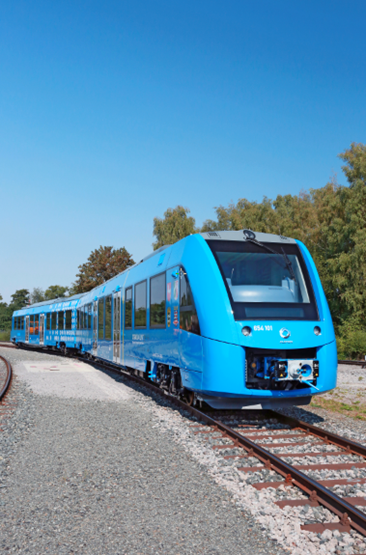 Read the peer reviews for this feature
Read the peer reviews for this feature
Converting a railway to electric operation demands considerable capital investment. Erecting masts and wires, arranging supply points and replacing rolling stock all need money.
Project planners need to carefully assess which tracks need wires above and which do not. A railway with
bi-directional tracks will need crossovers wired, whereas one that only uses crossovers for engineering trains will not, for example.
Thoughts are now turning to leaving sections of running lines without wires. This could save money, particularly where there is little space for overhead line equipment, such as under bridges and through tunnels. The key to this is reliably moving the electric train from one side of the gap to the other.
Trains can coast, as Virgin Trains East Coast occasionally demonstrates when problems force Network Rail to isolate current from overhead wires. Any coasting driver will be hoping he does not need to brake and stop, because the train will then be marooned. Given favourable gradients and signals, a train can coast for several miles.
Longer gaps can be bridged by providing secondary power supplies on a train. This might be a diesel engine (as in Hitachi’s bi-mode trains that are about to enter service), batteries (as tested a couple of years ago by NR in East Anglia), flywheel energy storage or hydrogen power.
However, unless those secondary sources can supply the same power as a train’s primary electrical system, performance will be worse. Top speed might be lower or acceleration more tardy, leading to longer journey times when compared with electric operation. Even so, an end-to-end journey might still be quicker using a mix of power supplies than it is today on diesel alone.
Cost is the driving force behind consideration of partial, or discontinuous, electrification. This cost is not so much in erecting masts and wires, as in altering structures to provide sufficient space around those wires to satisfy electrical clearance rules.
Britain traditionally used 2.75 metres as its clearance distance, but latest European rules demand 3.5 metres. Imagine a station that sits by a tunnel - or worse, between two tunnels. Without rebuilding the tunnels, the OLE might stand closer than 3.5 metres to platform tops. Although the rules permit clearances under 3.5 metres, Network Rail would need to provide a risk assessment to justify any derogation.
To date, standards body RSSB has received no application from NR for derogations. Instead, the network owner has opted for expensive rebuilding work which, in turn, led Government to postpone or cancel electrification work in the face of rocketing costs.
Return to our imaginary station sitting between its tunnels, and discontinuous electrification would remove the overhead wire from the platform line. There may just be a gap or an isolated and earthed wire.
If there’s a gap, then the train will need to have a pantograph that doesn’t extend to its full height when it leaves its contact wire, but remains at a suitable height to regain contact with the OLE after the platform. Using an earthed cable allows the pan to continue running as normal, but designers will need to consider the possibility of the earthed cable becoming live as the train bridges both live and earthed OLE.
Batteries could provide the power to restart the train and see it back under the wires. Those batteries could have been charged from regenerative brakes as the train slowed to a stop.
This concept could be extended to the complicated trackwork approaching a major station and into the station itself, to save the cost of erecting equally complicated wiring. Trains moving in and around the station would run on secondary power before regaining their OLE.
This might make the OLE cheaper, but it adds costs elsewhere. Any electric train running through the station would need to have a secondary power source - standard EMUs would not be permitted. NR and Government would save money, but train operators would face higher costs which might cut premium payments to Government or increase the subsidy it needed to provide.
Such decisions demand detailed analysis. And this analysis should extend to considering what secondary sources trains use, because passengers will be unimpressed if trains run on diesel in stations.
Hydrogen is an alternative. Used in a fuel cell, it directly generates electricity with water as its only emission. It has been the subject of considerable research from the University of Birmingham - Senior Lecturer Stuart Hillmansen tells RailReview that the university built a narrow-gauge locomotive powered by hydrogen five years ago. It took part in the Institution of Mechanical Engineers’ railway challenge in 2012 and acquitted itself well. Since then, Alstom has built a full-size hydrogen multiple unit which is now on test in Germany.
Hillmansen argues that hydrogen is safer than diesel as a fuel - it might burn, but it doesn’t set other things alight because it’s not highly radiative. He reckons that its power density is similar to diesel engines, but range is harder to achieve with a train able to carry a day’s worth of fuel whereas diesels generally carry two.
Hydrogen is secondary energy because, like electricity, it is produced from something else. And that something else is very common. Water contains hydrogen, as do classic hydrocarbon fuels such as natural gas, petroleum or coal. Sewage sludge can also be used.
Producing hydrogen from hydrocarbon fuels gives carbon dioxide as a by-product, which makes hydrogen use not free from carbon emissions. Using electrolysis consumes electricity to split hydrogen from the oxygen it’s bonded to in water (the reverse of the fuel cell process). If the electricity comes from renewable sources, then the hydrogen can be claimed to be low-emission.
With suitable storage, a rail depot may be able to produce hydrogen by electrolysis using cheap, off-peak electricity. Alternatively, a small steam methane reforming (SMR) plant could take a supply of natural gas to produce hydrogen on site.
The resulting gas is held in tanks on a train at pressures of 350-700 bar, before being fed into fuel cells. These cells are usually put together into stacks of hundreds of individual cells to give power outputs varying between 70kW and 200kW. Stacks can then be combined to give higher outputs.
In researching his PhD thesis at Birmingham University in 2013, Andreas Hoffrichter found that stack lives were comparable with DMU engines, and gave electrical efficiencies of up to 60%.
Hoffrichter closely examined well-to-wheel efficiencies and emissions for diesel, electricity and hydrogen, and took into account the distance that the fuel or energy needed might be moved. His study found that hydrogen was a suitable energy carrier for rail vehicles, and that it offered lower emissions and well-to-wheel efficiencies similar to electric and diesel traction.
He then took a diesel-electric multiple unit based on a Stadler design, and (using computer modelling on Birmingham-Stratford duties) compared it with a similar train powered by hydrogen and with a hydrogen-hybrid equipped with batteries to store energy from braking. He assumed the hydrogen came from natural gas and so emitted carbon dioxide.
Modelling showed that all three could achieve a day’s work. The hydrogen hybrid consumed 690kWh of primary energy for a Birmingham-Stratford run, while the hydrogen-only train used 1,017kWh and the diesel-electric 1,548kWh. Well-to-wheel carbon emissions were 533kg, 862kg and 1,895kg respectively (had the hydrogen come from renewable sources, the first two figures would be even lower). Vehicle efficiency as modelled was 45%, 41% and 25%, and well-to-wheel efficiency was 26%, 24% and 21%.
The hydrogen train tipped the scales at 77 tonnes, giving an axle load of 22.5t. The diesel-electric and hybrid were around 70t, giving 20t axle loads.
Alstom’s iLint multiple unit uses hydrogen as fuel and has batteries than can store energy recovered from braking, making it a hybrid. It is on test as a self-powered train, rather than one that can also take direct electrical power from overhead wires. In this way, it’s a direct replacement for conventional diesel multiple units rather than a unit that could cope with discontinuous electrification.
Alstom based the train on its established Coradia Lint DMU. It expects the same 140kph (87mph) top speed, and has tested iLint to 80kph in Germany. Hydrogen tanks and fuel cells sit on the roof of the train, while traction convertors and batteries sit under the floor. The batteries store energy from braking and supply it to boost that provided by the fuel cells when the train is accelerating.
Following its 80kph test last spring, Alstom Vice President Didier Pfleger said: “This test run is a significant milestone in environmental protection and technical innovation. With the Coradia iLint and its fuel cell technology, Alstom is the first railway manufacturer to offer a zero-emission alternative for mass transit trains. Today our new traction system, so far successfully proved on the test ring, is used on a train for the first time - a major step towards cleaner mobility in Europe.”
To make the case for using hydrogen as the secondary power on partially electrified lines, it must be combined with an EMU to form a bi-mode train. There’s a great opportunity for a rolling stock owner with redundant EMUs to use one as a test bed - indeed, Angel Trains Chief Executive Malcolm Brown told RailReview in early August that he could foresee just this.
Hoffrichter’s and Alstom’s work shows that hydrogen can replace diesel as the fuel in a train with electric transmission. It follows that it should be possible to combine hydrogen fuel cell stacks with straight electric power, as Hitachi and others have done in combining diesel engines into electric trains. Space for equipment and gas storage will be important, as will overall weight, but with most redundant EMUs comprising four cars there should be scope for conversion - at least as a test bed.
The other consideration for partially electrified lines is the effect of gaps on performance and journey times. This is another area that has come under Birmingham University’s study. It looked at the Great Western Main Line and put gaps where tunnels exist, including the 7km (4.3-mile) tunnel under the River Severn and Chipping Sodbury’s 4km (2.5-mile) tunnel.
It compared the HSTs that Great Western Railway uses on the route today with Class 390 EMUs (as Virgin uses on the West Coast Main Line) and with Hitachi’s IEP in its electric and bi-mode variants. Birmingham’s work dates from a few years ago, when IEP’s specification was changing. The Department for Transport has settled on all IEP units being bi-mode, but this doesn’t negate Birmingham’s conclusions because they show the comparison between types.
The Class 390 and electric IEP variant would need to coast through unwired sections, and so their resistance to motion as derived from the Davis Equation is important. This depends on the mass and velocity of a train.
Results gave a 112-minute journey for an HST between Paddington and Cardiff. With the line fully electrified, a Class 390 achieved 100 minutes, which grew to 103 minutes with partial electrification. Without wires through the Severn Tunnel, the ‘390’ was reduced to a low of 25kph in the tunnel (which dips at 1-in-100 before climbing at 1-in-90 towards Wales). Meanwhile, an eight-car electric IEP took 104 minutes with wires all the way and 107 minutes with gaps, while the equivalent bi-mode reached Cardiff in 105 minutes.
It’s no surprise that full electrification gives the faster journey, but even with gaps for tunnels journeys are quicker than with a diesel HST (see table, page 48). Whether the small cut in journey time is worth the cost of electrifying between tunnels and providing a new fleet is something for transport economists to debate. It’s possible that passengers might see only minimal improvements in journey times for considerable expense.
As NR plans stand, there is doubt that wires will be erected through Bath and on to Bristol. A bi-mode train on that route will run 83 miles from London to Wootton Bassett Junction on electric power, and then switch to diesel for the 24 miles to Bath and the further 11 miles to Bristol Temple Meads. That’s 30% of the Paddington-Temple Meads route under diesel power, compared with tunnels comprising 6.5% of the route between London and Cardiff in Birmingham University’s study.
In the absence of figures from modelling London-Bath-Bristol, these percentages hint that passengers will experience only a small reduction in journey times between the capital and Temple Meads, despite the cost and disruption of electrification. They should, however, see some benefit from new trains replacing HSTs that date from 1976.
TransPennine Express has ordered 19 bi-mode trains from Hitachi for use from 2019. It also has 66 Mk 5 coaches on order, to be hauled by diesel locomotives. When NR had plans to electrify the line from York through Leeds to Manchester, it would have been simple to switch the diesel locomotive for an electric one and run the coaches between Newcastle and Manchester/Liverpool. The bi-mode trains would run as electric before diverging to serve Hull or Middlesbrough with diesel.
These bi-mode trains could cope with partial electrification if, for example, revised plans meant OLE wasn’t erected through Huddersfield’s or Stalybridge’s tunnels, or through Standedge’s 5km (3.1-mile) darkness under the Pennines.
While Standedge is level, there’s a 1-in-96 rising gradient through the tunnels at Huddersfield for trains heading west. Eastbound trains must cope with a rising 1-in-145 at Stalybridge and Scout Tunnel’s 1-in-125. At Morley, an underground summit marks the switch between 1-in-410 and 1-in-500 gradients.
That makes switching the coaching stock from diesel to a straight electric locomotive very difficult, particularly westbound at Huddersfield where all TPE trains on that route stop. Switching to Class 88s provides a chance that little time might be lost because they pack a 710kW diesel engine, although their performance is considerably better when using their 4,000kW electric power.
This makes partial electrification a possibility for trans-Pennine. And there’s a similar case for the Midland Main Line, where the Department for Transport cancelled its wiring north of Kettering in July.
Bidders for the next Midland franchise will be required to procure bi-mode trains, according to the DfT. “Bi-modes will deliver passenger benefits sooner than electrification would without the disruption from putting up wires and masts along the whole route,” it said in its July public consultation document.
How much faster London-Sheffield journeys become remains to be seen. The next franchise’s bi-mode trains will run on electric power for their first 74 miles to Kettering North Junction, before becoming diesels for the remaining 90 miles to their South Yorkshire terminus. They will need sufficient diesel power to cope with MML’s stiff gradients, not least the 1-in-100 to Bradway Tunnel (a few miles south of Sheffield), that affects trains in both directions.
Partial electrification and bi-mode trains provide the possibility of filling in the missing parts later. This can deliver a substantial slug of improvements to journey times and pollution levels, by wiring the easy stretches first. It also provides the opportunity for extending current limits of electrification. This means that should the DfT be convinced to execute another electrification U-turn, then MML’s wires could be extended from Kettering to Leicester, then Derby/Nottingham, and then on to Sheffield.
Partial electrification provides a route to recover something from the mess of recent electrification projects, although there are problems still to solve, notably around pantographs if short sections of line are to be left without any constraining wire against which a pan could run.
Should raising or lowering the pantograph be left to the driver, or should it be automated to reduce the risk of human error? If automation is the way forward, should it be linked to systems such as ETCS that monitor a train’s position? Should Britain (once again) develop systems that make its trains different from others in the world?
The railway must remove its reliance on burning diesel. Hydrogen appears to satisfy many of the requirements, but it’s still to be tested within Britain’s tighter loading gauge and still to be combined within an EMU to make a hydrogen bi-mode.
Work could usefully extend to mapping how to swap from diesel bi-mode to hydrogen bi-mode in a cost-effective manner that doesn’t involve scrapping trains and building new.
Such a project could extend beyond just one train operator, and this invites some form of central co-ordination. This could fall to the DfT, but Government has a poor record of creating plans and then sticking to them. Decarbonising rail travel is a suitable strategic goal for a government. But should it embark on such a course, it must be careful not to change its mind as it’s done with electrification.

Bi-mode/hybrid technology on trains is quickly becoming the popular answer to the problem of escalating costs of electrification. Partial electrification is being heralded as the most affordable option, but we should clarify what is meant by ‘partial’, as this will drive different bi-mode train requirements.
Let’s say the Midland Main Line is electrified from London to Sheffield, but all the bridges and tunnels are missed - a high speed electric train with a small battery or super-capacitor may then be appropriate. If the electrification is only from London to Kettering, then significantly more energy will need to be carried on board in the form of diesel or hydrogen, to power the train at speed for sustained distances and periods of time.
In this debate we must consider the whole economic case - full electrification reduces journey times, the cost and complexity of the trains (initial capital and ongoing maintenance costs), and emissions, and is the most energy-efficient solution. If we move away from full electrification then we will lose some of these benefits, so the challenge is to get the balance right. Electrification is expensive, but we should consider the full costs of developing and operating bi-modes - for example, what is the true cost of diesel emissions? How much does hydrogen cost to produce, store and distribute? What is the cost of carrying a secondary engine and fuel source around, during periods when it is not needed?
In the near future we will see many more bi-mode trains on our network - the Stadler FLIRT, Hitachi IEP and Porterbrook’s ‘Flex’. In developing Flex, we identified an opportunity for a train that could widen its operation beyond the electrified network. Flex takes an existing electric train and adds a generator that meets the latest environmental standards so it becomes bi-mode. Alternative power sources are being considered for the next Flex fleet. The surplus of electric trains provides opportunities for innovations to meet passenger demand and growth, but this relies on there being a market for re-purposed, existing, good-quality trains within the franchise system.
The environmental case underpinning how UK rail is powered is really important. Moving away from fossil fuels is a necessity - our challenge is whether we can become an emissions-free railway and in what timeframe?
The only bi-mode technology that is available in the UK today for sustained use on main lines relies on diesel. It is interesting to note that electrification schemes are being cancelled at the same time as environmental legislation moves rapidly towards phasing out diesel engines in cars. And let’s not forget freight - each freight train takes a significant number of lorries off our congested roads. But freight trains often need high power to pull long, heavy trains, and many of the distribution centres are not electrified - so how do we develop these newer technologies to work for freight?
Emerging bi-mode technology needs to match the infrastructure (shorter or longer areas without electrification). We need to ensure the long-term infrastructure plan and rolling stock plans are aligned so that we specify the right train today for the long term, otherwise we risk replacing or modifying trains too early, which increases the total cost of the system. There is definitely a growing role for bi-mode trains in UK rail’s future plans, but the technology choice must match the infrastructure.
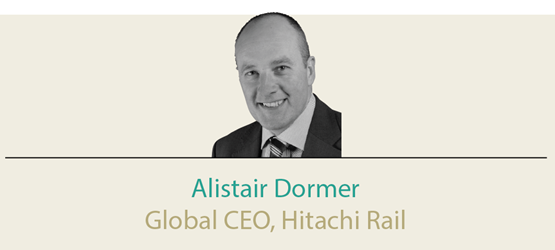
The UK Government’s latest electrification announcement requires the industry to think about the future without a full set of wires overhead.
Clearly, bi-mode solutions are currently firmly in the driver’s seat. Converting 21 solely electric Hitachi IEP trains to electro-diesel units for the Great Western route hasn’t been without its challenges, but passengers along the full length of the line will experience brand new trains with more seats from the autumn, rather than at an unspecified date in the future. Nevertheless, it is right that the industry considers how to make the best of a partially electrified network, and how both alternative fuels and new railway system technologies can add to this.
In this debate, there’s a tendency to fixate on the need for speed. Given Hitachi has been building very high-speed since 1964 (and with Javelin launching Britain’s HS1 line in 2009), we understand speed and its benefits. Yet the reality is Britain’s overcrowded railways need new trains with more capacity quickly. Hitachi’s bi-modes and HS2’s trains will both deliver journey time savings, but the key driver for both projects is the step-change in capacity they offer.
Where the Government and Network Rail can still make the case for electrification, we can’t overlook that there has to be sufficient available electrified track on which to test new trains, whether electro-diesel or electric-only. Without this, manufacturers and their customers will continue to have to test in Europe, and to carefully manage expectations around delivery and (ultimately) introducing new passenger timetables.
As for alternative technologies, Hitachi sees great potential in batteries. Our V-train 2, which was tested in the UK in 2007 using hybrid battery/diesel power and regenerative charging, was the world’s first high-speed hybrid train. Hitachi went on to launch the DENCHA train in Japan in 2016, running primarily on OLE, but with a battery that is able to carry it a further 40km off the wires. Crucially, battery power offers the ability to run EMUs to lines that haven’t been fully electrified, thereby better linking communities while having less environmental impact.
Historically, the challenge with batteries has been their cost, weight and length of charge, limiting their use to shorter distances. However, the technology is advancing, with the driver of innovation likely to be the automotive industry, with its greater economies of scale.
Beyond the questions of fuel and the ‘need for speed,’ passengers’ experience of the railway is being transformed as we realise the potential in digital technologies. Dynamic headway, for example, adapts train services to real-time demand, which increases utilisation and passenger satisfaction while saving on energy.
It is clear that in the longer term we will be burning less diesel. Pure electric trains offer many benefits, but Network Rail has to value-engineer the infrastructure to make installation more affordable. New technologies are advancing quickly, but until a single, superior technology becomes obvious, picking winners today is precarious. For now, we have to be open to innovations and the upsides they offer.
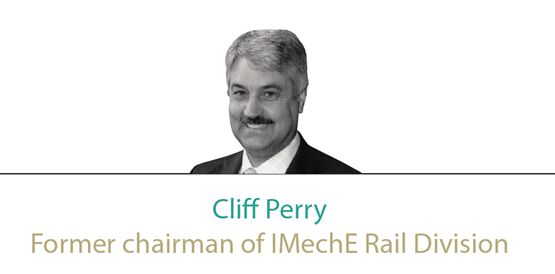
“If I was going there, I certainly wouldn’t want to be starting from here” - Country Local responding to lost traveller.
If ever this applied to railways, it certainly does now, and the range of inter-related issues that Philip Haigh weaves together gives a flavour of the unattractive starting position we currently have.The interaction of train and infrastructure, European regulations (who needs them?), the UK loading gauge, future technologies, air quality legislation, and sustainable solutions all colliding in the face of political expedience, strategic ineptitude, delivery failures and unaligned commercial objectives. A toxic mix?
Yet the real weakness of our current position is not the direction we are taking, but the fact that someone appears to have changed the destination, thereby demonstrating both the strength and the weakness of Government decision-making. Only the Government can deliver a coherent transport strategy for the country, and only the Government can change it, which it will and does. A good strategy can be very powerful, signalling a clear direction for optimisation and for the deliverers to get on with. This generates confidence that brings investment in both plant and people, so that delivery and productivity improve, and even the Treasury can see the benefit. On the downside, every time the Government changes its mind, not only do the costs rise as optimisation falters, but confidence is eroded and productivity falls. This is, for me, the main message of the article.
So let me suggest an optimum destination that it is easy for us to agree on. How about developing our railway system as a mass transport mode that cheaply and sustainably does what it is good at? Large volumes, big loads, with high speed between nodes of economic activity in near absolute safety and with high levels of reliability. Volumes and concentrated traffic make railways indispensable for commuting and the life of cities; bulk loads define its contribution in freight; and reliable, safe speed lays down the marker for inter-city and inter-urban travel at UK distances.
My role for Government is for it to say what it wants, then ask some railwaymen to deliver it. We can do this successfully, with Crossrail the obvious recent example. Inside that project, train engineers looking at the whole-life cost of trains (including that of energy in a frequent stop scenario) specified an efficient high-volume people mover. Private industry has delivered a world-beating solution in the Aventra, so much better that its economics knock a poorly specified new train into the sidings. There is evidence that George Stephenson said something like the following to a young engineer he met: “Although I may be the father of steam locomotives, electricity is the way propulsion will go. You may be young enough to see it, I am not.” What a great man! How disappointed he would be at our rate of progress!
From Stephenson to now - from Sweden and Japan, railway engineers know the answer: an electric railway running on green electricity, everywhere that railways go. Simple, cheap, reliable, proven and well-developed technology… beat that!
Nearly a decade ago, under the auspices of ATOC, we measured the actual energy consumption of electric trains in the UK and compared it with similar trains by the same manufacturer in Sweden. Surprise, surprise - they were nearly identical. Yet when we worked out the sustainability of the train by applying the CO2 generated, the Swedish train was 2,000 times better than the c2c Class 357. (Yes, two thousand - this is not a typo!). Clean electricity is the reason, with Swedish generation dominated by low-carbon nuclear and hydro-electric plant. It is also self-evident that the air quality impact is negligible with near zero emissions at the point of use. The deliverability of these proven technologies is not in doubt, so why take our eyes off the ball?
Incidentally, these estimates of CO2 emissions (55gms CO2 per pass km) were based on average load factors of 30%, and electricity generated with the UK mix at the time (well over 30% coal). The success of rail growth post-privatisation means that this average load factor has improved (100% more folk, 40% more trains). Additionally, progress with the decarbonisation of our electricity supply over the past decade has been good.
So let us restate the destination. An all-electric railway.
Then how do we get there? Through a steady programme of electrification at a rate the industry can deliver reliably, effectively and productively. Evidence and common sense suggests that this may be lower than 100 route miles per year, but even this means that in four or five decades we will have caught up with the Swedish.
Bi-mode traction capability is, under this scenario, a relatively short-term and short-distance requirement, fulfilled by the application to rail of whatever technology our automotive colleagues settle on for lorries and big plant. This they can do with their vast market and research budgets.
I suspect that rail was first in the use of mobile high-pressure steam power because the low rolling resistance of wheel on rail was necessary for it to work at the time, and the early 19th century roads were inadequate for the loads required. This need has passed - there is absolutely no reason for rail to be first in technology selection and saddle itself with the costs of its own search for the right solution, be it mechanical energy recovery (which seems to work for Formula 1), compressed fluids, hydrogen cells or superconductors, all of which have been demonstrated in working locomotives at the IMechE’s Railway Challenge over the past five years.
The short-distance requirement is the key, so that energy recovery provides only the means to bridge short gaps in the wire that would be expensive to install. Long-distance unelectrified routes are given through trains by adding a single-mode locomotive at the end of the electrified section, which we know can be done safely and quickly within the normal time that the doors are open for passengers. (British Railways Southern Region 1960s).
If air quality is a big issue for the diesel locomotive, then electrify the route, missing out any tunnels and complex bits. For discontinuous electric overhead, pan dropping should always be automatic on simple reliability grounds, and is probably preferable to non-electrified wire sections for the same reason. In the fullness of time there comes a point at which the high-capital cost of electrification for low-density traffic is justified by the whole-system benefits of unified operation, the elimination of mobile prime movers with their costs, and the predictability of low electrification costs. Even before that time arrives, a sense of perspective tells us that once the core busy railway is electrified the outer ends of the routes are the lightly used and marginal tail .
Full bi-mode capability with equal performance in each mode is super-flexible, but still requires a non-diesel technology breakthrough, and there is absolutely no suggestion in Philip’s excellent review that it will be cheap, lightweight or energy -efficient. So let us learn the lesson of IEP costs and make our destination somewhere more sustainable, somewhere cheaper to run, and somewhere the passengers love.
Getting there from here then becomes relatively simple and achievable, so that the young among us may well live to see it. In this respect, my 50-year career tells me I will be like the great man in just one respect - understanding a railway destination I will not see!

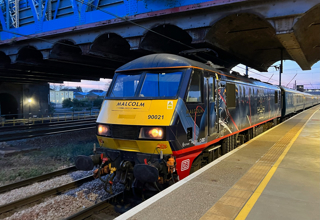
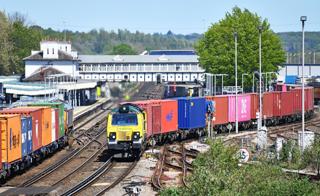
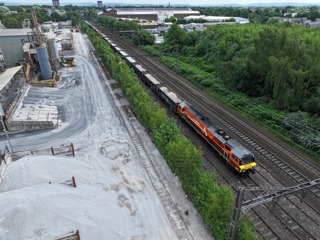
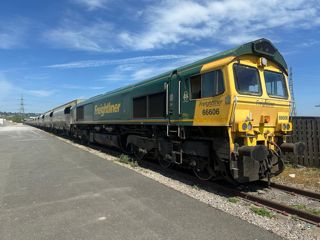











Login to comment
Comments
No comments have been made yet.